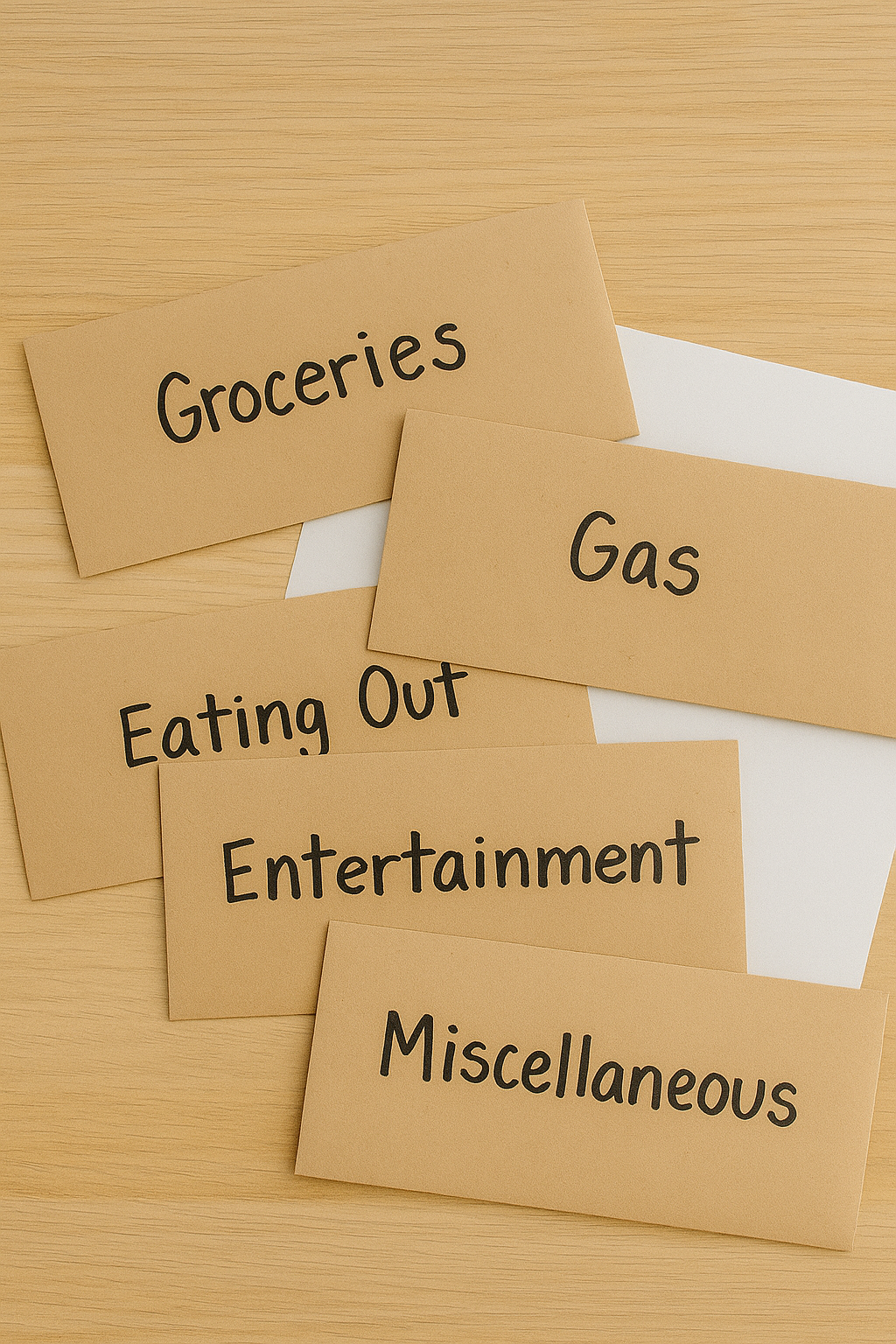A Simple, Hands-On Way to Control Spending
If you’ve ever felt like money disappears the moment it hits your account, you’re not alone. For many families, keeping track of spending — especially on groceries, entertainment, and little extras — is one of the biggest challenges in budgeting.
That’s where the envelope system comes in. This old-school method is still one of the most effective tools for managing everyday spending — and it’s easy to start, even if you’re brand new to budgeting.
Here’s a complete guide to the envelope system, how it works, and how you can use it to take control of your finances starting today.
What Is the Envelope System?
The envelope system is a cash-based budgeting method where you divide your monthly income into categories, place the budgeted amount of cash into separate envelopes, and spend only what’s in each one.
Once an envelope is empty, spending in that category stops until the next month — no exceptions.
It’s a powerful way to:
- Limit overspending
- Become more aware of your habits
- Gain confidence with your money
It works because it’s physical. You can see the money, feel it leave your hands, and know exactly how much is left.
Who Should Use It?
The envelope system is especially helpful if:
- You tend to overspend in certain categories
- You struggle to stay within a budget
- You want a more tangible way to manage money
- You’re new to budgeting and want something simple
Even if you don’t use it for all expenses, it’s extremely useful for variable categories like food, shopping, entertainment, and personal spending.
Step 1: Choose Your Categories
Start by deciding which spending categories you’ll manage with envelopes. Focus on areas where you usually overspend or where cash makes sense.
Good starter categories:
- Groceries
- Dining out
- Gas or transportation
- Entertainment
- Clothing
- Personal care
- Kids’ activities
- Miscellaneous
Avoid using cash for bills you pay online (like rent or utilities). The envelope system works best for everyday, in-person expenses.
Step 2: Set Your Budget for Each Category
Decide how much you want to spend in each category for the month (or biweekly, depending on how you’re paid). Base this on your income and past spending.
For example:
- Groceries: $600
- Gas: $200
- Dining out: $150
- Entertainment: $100
- Personal: $50
These numbers will guide how much cash to withdraw and divide between envelopes.
Step 3: Prepare Your Envelopes
Label each envelope clearly with its category name. You can use:
- Regular mailing envelopes
- A zippered wallet with dividers
- A cash envelope binder
- Plastic envelopes or folders
Some people even use small labeled jars at home if they prefer not to carry envelopes around.
On each envelope, you can write the total budgeted amount and record each transaction for extra tracking.
Step 4: Withdraw Cash and Fill Envelopes
Once your budget is set, go to the bank or ATM and withdraw the total cash needed for your envelopes.
Distribute the money into each envelope according to your plan. For example, if you budgeted $600 for groceries, place exactly $600 into that envelope.
Tip: Withdraw in mixed bills ($20s, $10s, $5s) so you can make change easily.
Step 5: Spend Only What’s in the Envelope
This is the core rule of the system: when you’re out shopping or going out to eat, use only the money in the matching envelope.
If you’re at the store and your “Groceries” envelope has $60 left, you can only spend up to $60. If it’s gone, you’ll need to adjust your plans or wait until next month’s refill.
Avoid borrowing from other envelopes — the boundaries are what keep you on track.
Step 6: Track and Refill Monthly
At the end of your budgeting period (monthly or biweekly), empty and reset your envelopes. If there’s leftover cash:
- Leave it in the envelope as a bonus or buffer for next month
- Move it to savings or another goal
- Use it as fun money or a small family treat
Refill each envelope with the new month’s cash and continue the habit.
Can You Use a Digital Version?
Yes — if using physical cash isn’t ideal, you can still apply the envelope concept digitally using apps like:
- Goodbudget (virtual envelopes)
- Mvelopes
- YNAB (You Need a Budget)
- Spreadsheets or bank account sub-categories
The concept is the same: limit your spending by category and stop when the envelope (or digital balance) is empty.
Tips to Make It Work
- Start with 2–3 envelopes if you feel overwhelmed
- Keep your envelopes in a safe place or carry only what you need
- Don’t feel guilty about using cash — it’s just a tool
- Stay consistent and track spending when possible
- Review your totals monthly and adjust as needed
Pros and Cons of the Envelope System
Pros:
- Highly effective for controlling overspending
- Great for beginners
- Encourages mindful, intentional spending
- Physical feedback helps build discipline
Cons:
- Not ideal for online purchases or recurring bills
- Less secure than bank accounts if not stored safely
- Requires regular cash withdrawals and updates
Final Thought: Simple, Visual, Effective
The envelope system may seem old-fashioned, but its simplicity is exactly why it works. It removes guesswork, reduces stress, and helps you make better spending decisions — one envelope at a time.
If you’re looking for a beginner-friendly way to get control over your daily spending, this method could be the budget breakthrough your family needs.
